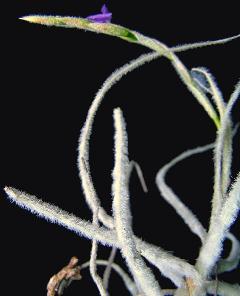
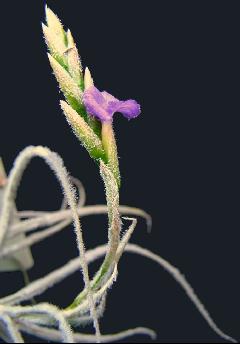
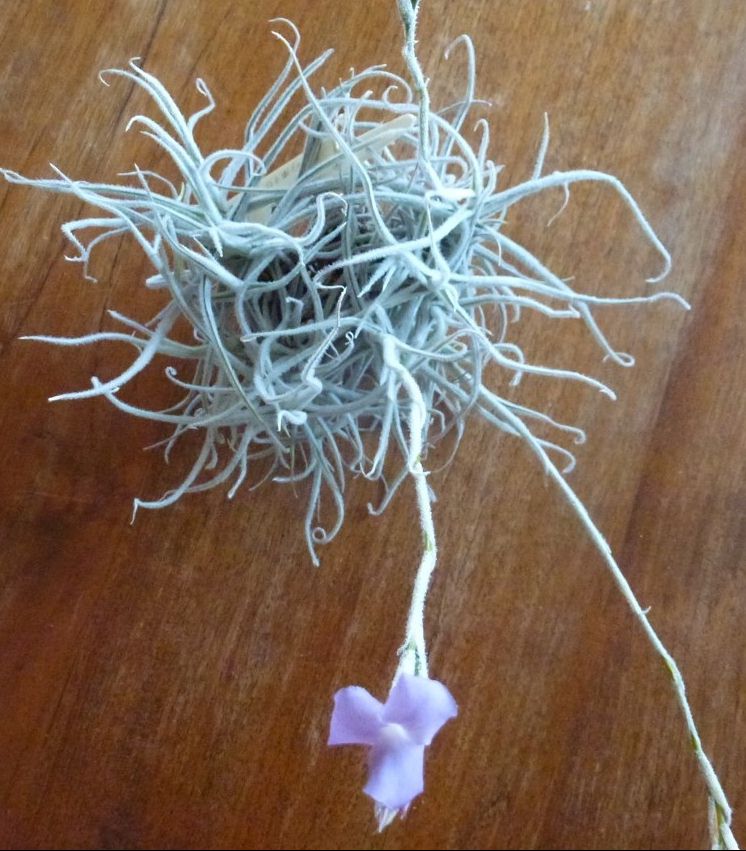
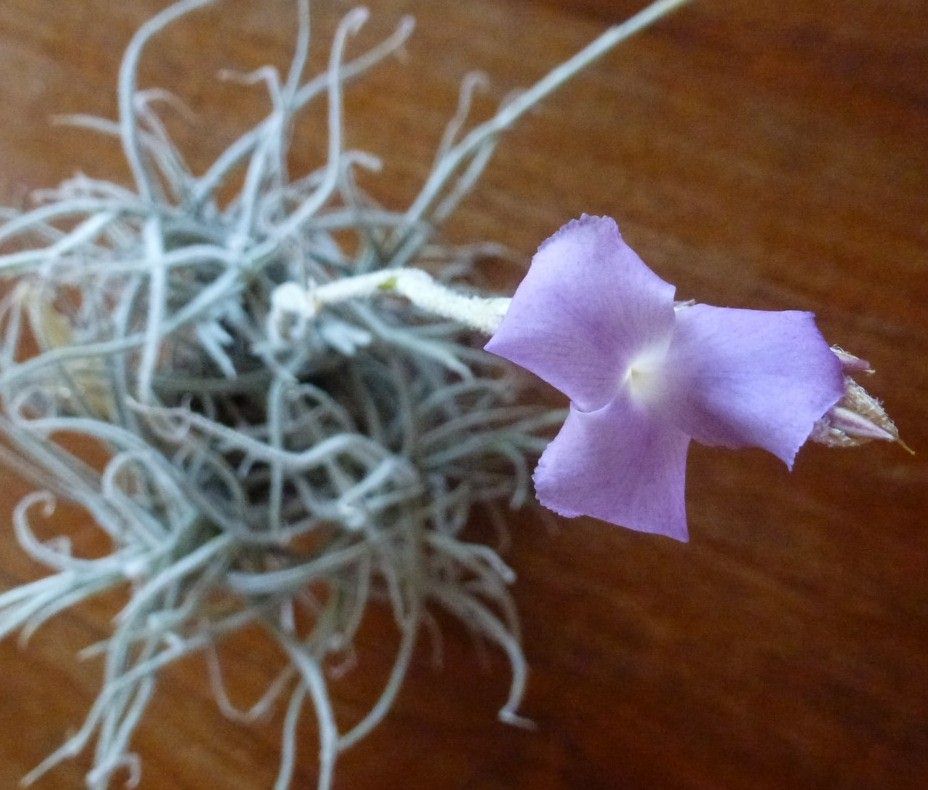
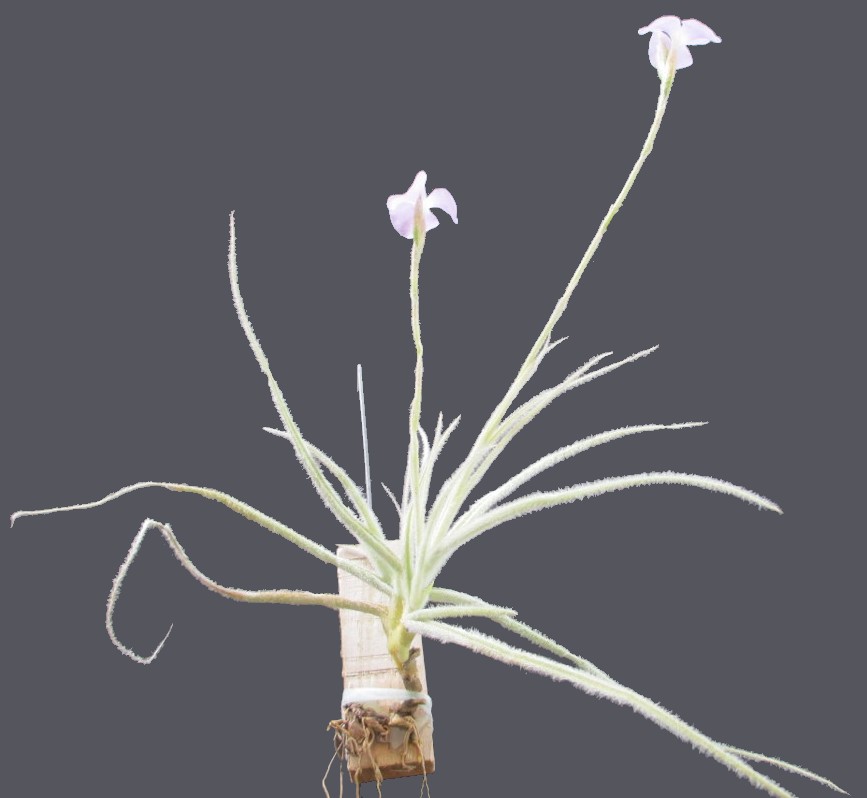
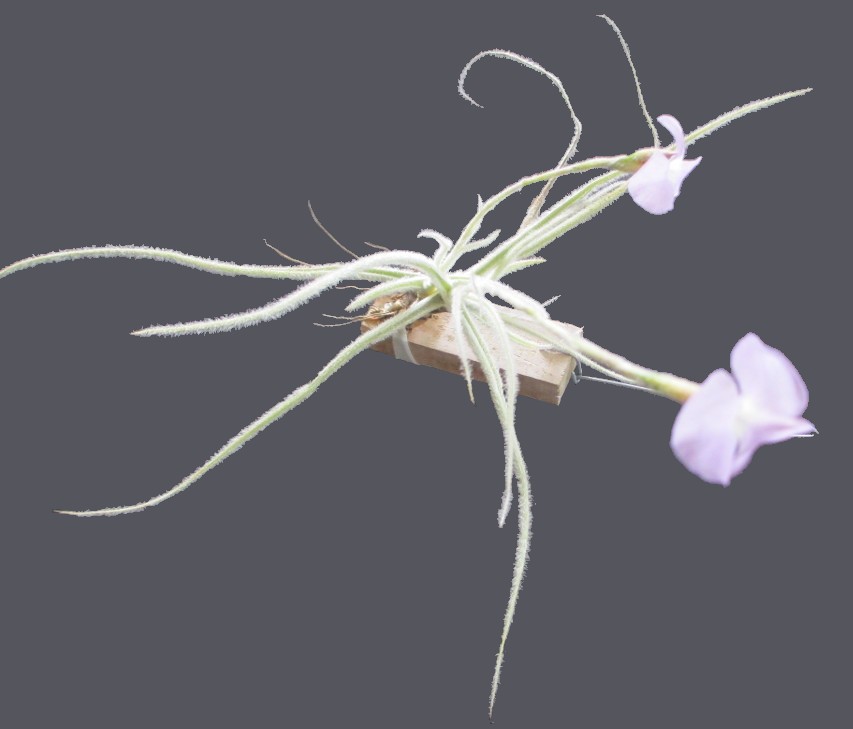
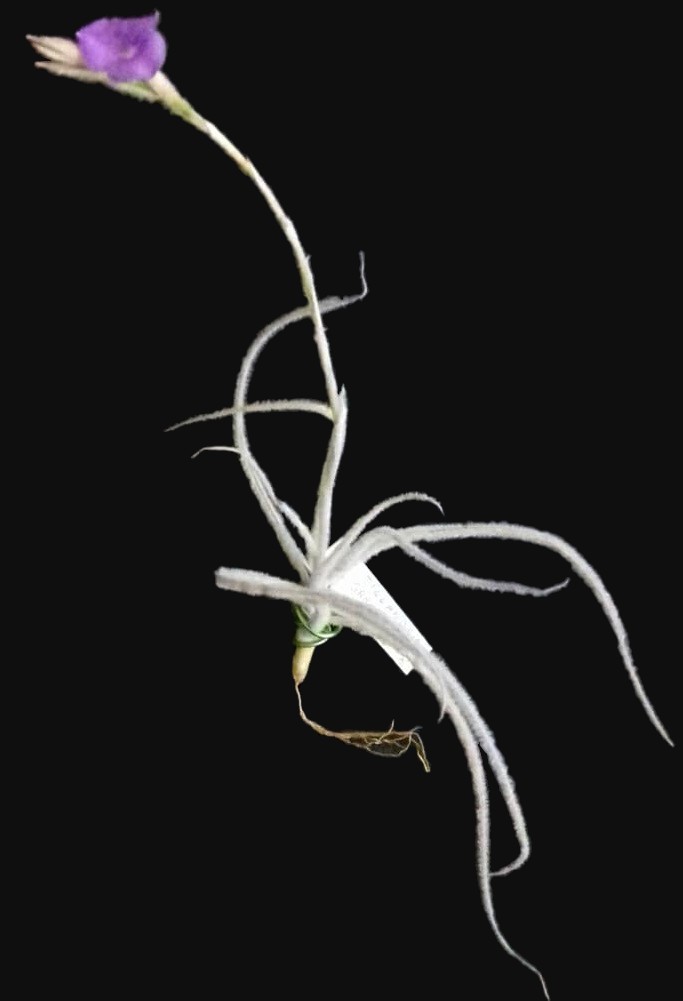
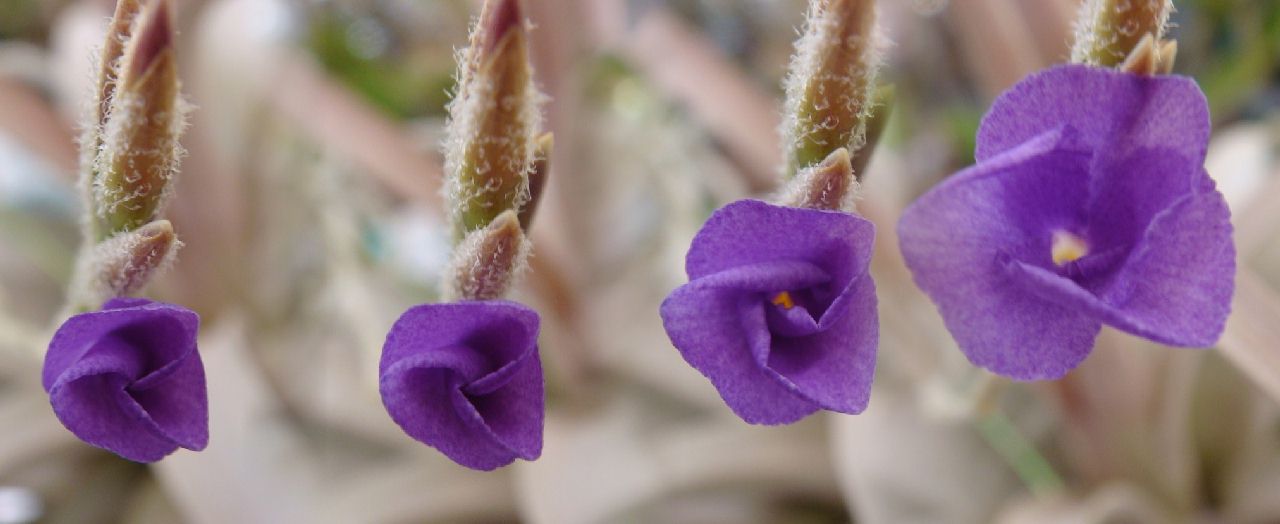
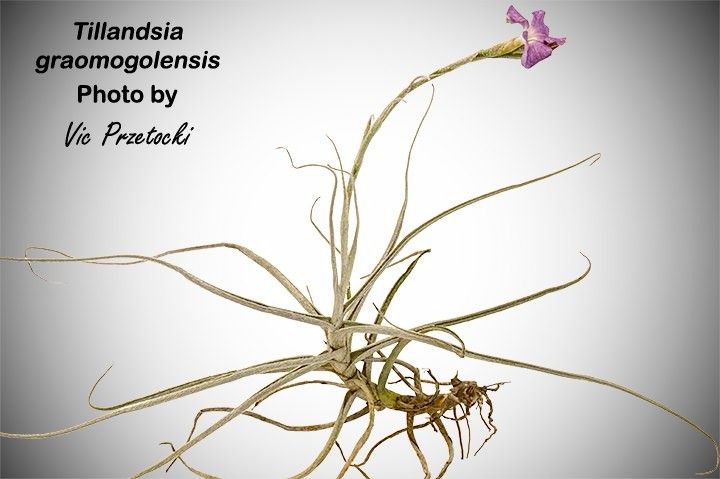
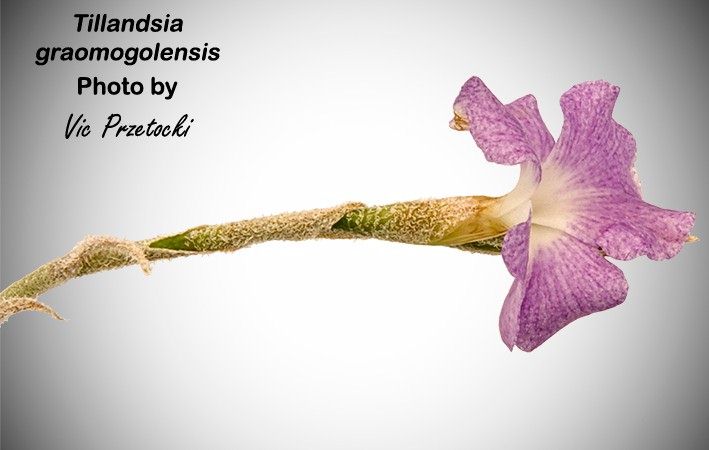
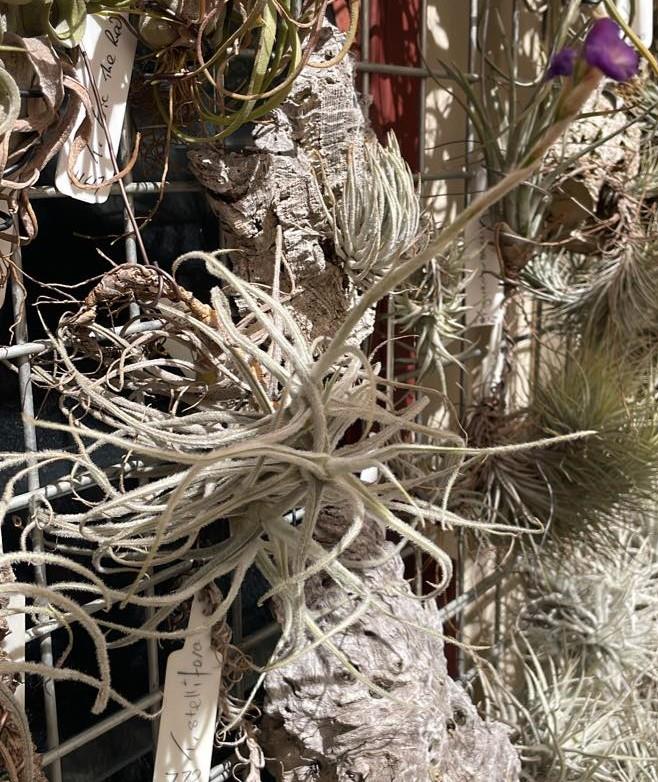
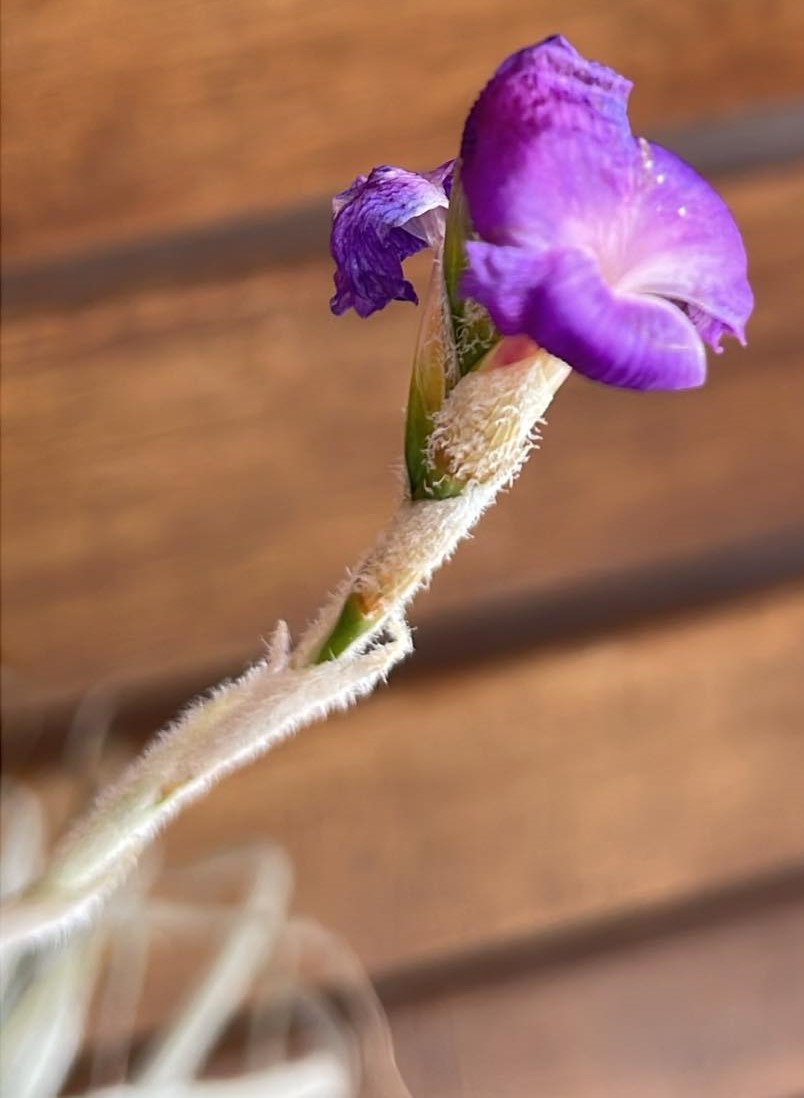
Tillandsia kurt horstii Rauh W Trop. Subtrop. Pflanzenwelt 60: 69-77. 1987
Placed under synonymy under T. graomogolensis by Till in Bromelia 5(1-4):42 .1999
Planta caulescens, florens usque ad 30 cm alta, ramosissima, caespites laxos 10-15 cm altos, 10-50 cm diametientes formans; cauliusque ad 15 cm longus basi tenuis, nudus, copiose radicans, apicem versus incrassatus vaginis foliorum desiccatorum obtectus; folia viventia laxe spiraliter disposita. Vaginae distincte limitatae amplexicaules, usque ad 1,5 cm altae, 1,7 cm latae, pallide brunnescentes supra glabrae nitentes, subtus in dimidio superiore dense albo-lepidotae. Laminae iuventute erectae, senectute plus minusve rectangulariter patentes, usque ad 15 cm longae, 4 mm latae, longe attenuatae, valde canaliculatae, utrimque dense albo-divaricato-lepidotae; lepides valde asymmetricae aliformiter elongatae. Inflorescentiae erectae vel paulum arcuatae, usque ad 20 cm longae semper simplices. Scapus inflorescentiae tenuis, 15-20 cm longus, glaber. Bracteae scapi erectae, basales subfoliatae, dense albo-lepidotae, superiores elaminatae oblongo-lanceolatae, atroviolaceae, glabrescentes. Spica complanata, 3-6 flora, usque ad 3 cm longa, 1 cm lata; rhachis a latere applanata, visibilis, modice flexuosa, glabra. Bracteae florales erectae, ecarinatae, oblongo-lanceolatae, acuminatae, usque ad 15 mm longae, 4 mm latae, sepala superantes, laxe lepidotae, glabrescentes, atroviolaceae , in sicco valde nervatae. Flores subsessiles, usque ad 2,5 cm longi, violacei centro albo. Sepala libera, lanceolata, 12 mm longa, 4 mm lata, posteriora subcarinata apice atroviolaceae, basim versus virescenti-alba. Petala anguste lanceolata laminis late ovalibus 5 x 5 mm metientibus, planis, violaceis. Stamina stylusque profunde inclusa.
Tillandsia streptocarpa BAKER (Typus Balansa 615) similis, sed ab ea differt habitu dense pulvinato, caulibus tenuibus ramosissimis et copiose radicantibus, foliis angustissimis profunde canaliculatis congesto-patentibus lepidotis, inflorescentibus semper simplicibus, spicis brevissimis usque ad 3 cm longis, 0,5 cm latis laxe paucifloris.
Holotypus: Rauh et Kurt Ingo Horst 67335 (23. 4. 1986), in herb. inst. bot. system. univ. heidelb. (HEID).
Patria et distributio: planta epilithica in rupibus graniticis (montibus insularibus) caespites expansos, sed laxos formans, apud 1000 m.s.m., prope Pedra Azul (septenr. orient. Minas Gerais, in direct. meridion. Vitoria da Conquista), Brasilia.
PLANT - Caulescent, flowering to 30cm high, amply branched and lax, l0-15cm high and making a large swathe, l0-50cm diameter. Stem to l5cm long, at the base thin, naked and strongly rooted, towards the tip thickened by the sheath of dead leaves; live leaves laxly spirally arranged.
LEAF SHEATH - Clearly evident, strongly covering the stem to l.5cm high, l.7cm wide, pale brownish, top side naked, shiny, underneath of the top half dense white (sparrig) lepidote.
LEAF BLADE - When young erect, with age ca. horizontal sticking out, to l5cm long, 4mm wide, long attenuate, strongly channelled, almost grooved, both sides dense white pruinose lepidote, scales strongly asymmetric and long type of wings.
INFLORESCENCE - Erect to slightly bent over, to 20cm long, always simple.
SCAPE - Very thin, l5-20cm long, naked.
SCAPE BRACTS - Erect, the bottom ones longer than the internodes, leaflike, dense white lepidote, the upper bladeless, longish lancelike, dark-violet, naked.
SPIKE - Complanate, 3-6 flowered, to 3cm long, lcm wide, acuminate.
RHACHIS - Flat on the side, visible, weakly flexible, naked.
FLOWER BRACT - Erect longish lancelike, acuminate, to l5mm long, 4mm wide, exceeds the sepals, scattered lepidote, naked, dark violet, not keeled, when dry strongly nerved.
FLOWER - Subsessile.
SEPAL - Lancelike, ca l2mm long, free at base, the posterior slightly keeled, the tip dark violet, the bottom greenish white.
PETAL - Thin lancelike with broad oval, 5x5mm large, flat and wide, blue violet 'Platten', throat white.
STYLE & STIGMA - Deeply enclosed, filament flat with anther exceeding the short style.
HOLOTYPE Rauh & Kurt Ingo Horst 67 335 (23. 4. 1986) HEID
HABITAT - Growing on granite rocks in compound expanses, in lax formations, about l000m. near Pedra Azul (N.E. of Minas Gerais. S. of Vitoria da Conquista), BRAZIL.
Differs from T. streptocarpa in:
1 - Forms dense cushions.
2 - Stem tenuous and very much branched with many roots.
3 - Leaves narrow, deeply channelled with congested spreading lepidote scales.
4 - Inflorescence always simple.
5 - Spike very short to 3cm long, 0.5cm wide, lax, few flowered.